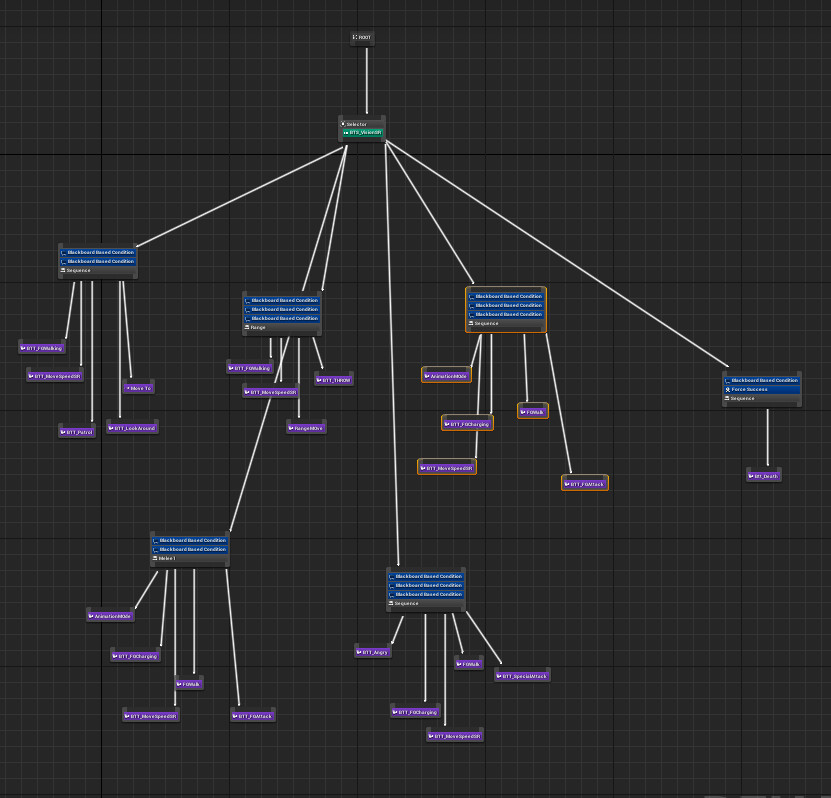

#Unreal engine 4 ai full#
Not only do you need to find a good path through a complex environment, avoid collisions, stay in formation and so on… but you need to do so in a way that is robust, respects the physical constraints of the agent and allows it to make full use of the 3D environment around it. Navigation in 3D space – aeroplane and helicopter flight, spaceflight, submarine navigation, and so on – is a difficult problem. Morph, split, and reform as they navigate around obstaclesīe fully customized to place units however the designers see fit, including layouts that incorporate multiple unit types – put your swordsmen at the front, archers at the rear and cavalry on the flanks Kythera’s intelligent 2D formations can:īe dynamically generated from available units in-game This is a good choice for certain high impact characters, including the player character.īattle formations can make or break any game with organised combat units, from bands of skirmishers to sweeping armies. While somewhat more computationally expensive, the result is extremely robust and reliable. It efficiently bakes moving obstacles into the navmesh every frame, with planned paths instantly updating. Local Avoidance Layer: an approach unique to Kythera. It provides a more fluid style of motion that gives a particularly natural feel to hordes of enemies and packs of animals. Kythera includes a custom implementation which does a substantially better job of handling these degenerate cases.Ĭontextual Steering: based on an approach first proposed by Andrew Frey in 2013, extended and generalized by Kythera AI to form a powerful, novel steering method. It provides directed, intentional movement that typically works well for human characters, but often struggles with the constraints of a navmesh, and avoiding static obstacles or characters who are standing still. ORCA: an RVO-based solution, widely used in games today. These systems are entirely interoperable, allowing you to use whichever works best for a particular situation or character. In contrast, Kythera has three state-of-the-art avoidance systems, all of which include substantial improvements beyond the published algorithms. Unreal’s native avoidance system takes a somewhat traditional, off-the-peg RVO-based approach. Most games use a single solution, typically either an RVO-based solution like ORCA or a solution based on steering forces, requiring a significant amount of development time to customize that solution. This simplifies game design tasks like finding spawning location and, depending on your level geometry, this can result in a substantial improvement in path planner performance.ĭynamic collision avoidance is a problem that has plagued game developers for as long as we’ve had characters moving freely around one another. Kythera prunes away the unreachable areas as the navmesh is generated, including when areas change during gameplay. Navmesh Pruning: Most auto-generated navmeshes cover all traversable surfaces, whether or not they’re actually reachable, wasting memory and computation time on inaccessible rooftops and closed-off areas that no player or AI will ever need to navigate. A drifting boat becomes a makeshift bridge the player abandons a car, and AI enemies instantly see it as an obstacle to take cover behind or vault over. Automated markup is also performed during dynamic regeneration – any time the navmesh is regenerated during play – enabling the AI to interact with terrain changes in ways that are difficult or impossible to replicate with designer markup. Kythera automatically generates all of this data as part of navmesh generation, saving enormous amounts of designer time, ensuring consistency, and eliminating errors. However, only Kythera offers:Īutomated Markup: In Unreal, designers have to hand-annotate the map with cover points and navigation links for climbing, jumping, and vaulting. Pathfindingīoth Unreal and Kythera use a navigation mesh (navmesh) based solution for pathfinding and support dynamic regeneration of the navmesh during gameplay. While Unreal includes basic 2D navigation features such as dynamic navmesh generation and pathfinding, there are several areas in which Kythera’s solution dramatically outshines theirs. Norbert Varga, Creative Director at Digital Arrow

“We are very happy with the Kythera AI, even though Aquanox has very complex environments and ships have a wide degree of freedom in movement, the AI has no problem understanding and navigating the environment.”


 0 kommentar(er)
0 kommentar(er)
